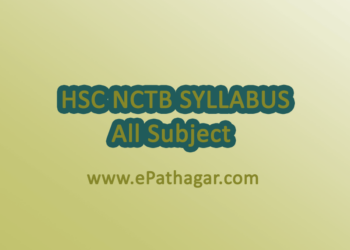Waiting for Godot by Samuel Beckett is a poignant and enigmatic masterpiece that explores the absurdity of human existence through the experiences of two characters, Vladimir and Estragon, who wait endlessly for the arrival of someone named Godot. Set against a barren landscape, their seemingly futile waiting becomes a metaphor for the human condition, highlighting themes of existentialism, uncertainty, and the search for meaning in a world that appears devoid of purpose. Through sparse dialogue, Beckett creates a haunting atmosphere of despair, punctuated with moments of dark humor and introspection. As the characters grapple with boredom, loneliness, and the passage of time, the play invites audiences to contemplate the nature of existence and the inevitability of mortality. With its minimalist setting and profound philosophical underpinnings, Analysis of Waiting for Godot remains a seminal work of 20th-century literature, challenging readers to confront the uncertainties of life and the mysteries of the human condition.
Waiting for Goedot Book Review
Introduction: Waiting for Godot by Samuel Beckett stands as a landmark in 20th-century literature, encapsulating the essence of existentialism and absurdism. Through its minimalistic setting and profound dialogue, the play delves into the depths of human existence, presenting a timeless exploration of meaning, purpose, and the struggle against the absurdity of life. In this comprehensive review, we will dissect the themes, characters, structure, and impact of Waiting for Godot unraveling its layers of complexity and inviting readers to contemplate its enduring significance.
Themes: At the heart of Analysis of Waiting for Godot lie several overarching themes that resonate deeply with audiences across generations. Chief among these is the concept of existentialism, which emphasizes the individual’s confrontation with the meaninglessness and uncertainty of existence. Vladimir and Estragon’s aimless waiting for the elusive Godot serves as a metaphor for the human condition, wherein individuals grapple with the void of purpose in a seemingly indifferent universe. Beckett explores the theme of absurdity, a notion central to existentialist philosophy. The characters’ repetitive routines, futile conversations, and lack of resolution highlight the inherent absurdity of their situation. Yet, amidst the bleakness, Beckett infuses the narrative with moments of dark humor, underscoring the resilience of the human spirit in the face of absurdity. The play also delves into the theme of memory and identity, as Vladimir and Estragon struggle to recall past events and grapple with their sense of self amidst their existential crisis. Their fragmented memories and disjointed conversations mirror the fragmented nature of human consciousness, blurring the lines between the past, present, and future.
Characters: Central to the narrative are the two protagonists, Vladimir and Estragon, whose names evoke biblical connotations (“Vladimir” resembling “Vladimir” or “ruler of the world,” and “Estragon” resembling “Esther,” a queen in the Old Testament). Vladimir, often referred to as Didi, assumes the role of the more contemplative and intellectual of the duo, while Estragon, or Gogo, embodies a more instinctive and impulsive nature. Their dynamic relationship oscillates between camaraderie and conflict, as they navigate the challenges of their shared predicament. Despite their differences, they rely on each other for companionship and support, finding solace in their shared struggle against the absurdity of their existence.
The enigmatic character of Godot looms large throughout the play, despite never making a physical appearance. Representing an elusive figure of authority or salvation, Godot symbolizes humanity’s incessant quest for meaning and purpose. His ambiguous presence serves as a catalyst for Vladimir and Estragon’s existential dilemma, driving their perpetual cycle of waiting and uncertainty.
Structure: Analysis of Waiting for Godot defies conventional narrative structure, eschewing traditional plot development in favor of a cyclical and repetitive format. The play consists of two acts, each depicting a single day in the lives of Vladimir and Estragon as they wait for Godot. Within this framework, Beckett employs a minimalist setting, consisting solely of a desolate country road with a single tree—a stark backdrop that amplifies the characters’ sense of isolation and insignificance. The dialogue unfolds in a series of fragmented exchanges, interspersed with pauses and silences that speak volumes. Beckett’s masterful use of language and rhythm imbues the dialogue with a lyrical quality, evoking a sense of poetry amidst the existential despair.
The cyclical nature of the play is underscored by the repetition of events and motifs, such as the characters’ recurring conversations, failed attempts at action, and the constant anticipation of Godot’s arrival. This repetitive structure serves to emphasize the characters’ sense of futility and the inescapable monotony of their existence.
Impact: Since its premiere in 1953, Analysis of Waiting for Godot has garnered widespread acclaim and controversy, cementing its status as a seminal work of modern drama. Its themes of existentialism, absurdism, and the human condition have resonated with audiences and scholars alike, sparking countless interpretations and analyses. The play’s influence extends far beyond the realm of literature, permeating popular culture, philosophy, and the arts. Its minimalist aesthetic and existential themes have inspired filmmakers, playwrights, and artists across generations, leaving an indelible mark on the cultural landscape. Waiting for Godot continues to provoke discussions on the nature of meaning, identity, and the search for purpose in an increasingly chaotic world. Its enduring relevance serves as a testament to Beckett’s profound insight into the human psyche and his ability to capture the essence of the human experience.
Also Read: Summary of Sophie’s Choice with Synopsis and Plot Review PDF
What are the weaknesses of this book?
Waiting for Godot is widely celebrated for its profound exploration of existential themes and innovative theatrical techniques, but it is not without its weaknesses. One of the primary criticisms leveled against the play is its perceived lack of plot and resolution. Critics argue that the repetitive structure and absence of a clear narrative arc can leave audiences feeling frustrated and disengaged. The play’s circular nature, wherein Vladimir and Estragon seem trapped in a perpetual cycle of waiting, can be interpreted as tedious or overly repetitive, detracting from the overall impact of the work. The minimalist setting and sparse dialogue may alienate some readers or theatergoers who prefer more conventional storytelling. The play’s reliance on ambiguity and open-mindedness can also lead to confusion or dissatisfaction among those seeking concrete answers or closure. Moreover, the absence of character development beyond Vladimir and Estragon leaves the supporting cast—such as Pozzo and Lucky—feeling underdeveloped and lacking in depth.
While Beckett’s use of language is often praised for its poetic beauty and rhythmic cadence, some critics argue that the play’s dialogue can be overly cryptic or inaccessible. The dense symbolism and philosophical musings may alienate readers who are not well-versed in existentialist philosophy or literary theory. Analysis of Waiting for Godot is undeniably a seminal work of 20th-century literature, its weaknesses lie in its unconventional structure, minimalist style, and enigmatic storytelling, which may not resonate with all audiences.

Waiting for Godot book age rating – Suitable ages of readers
Waiting for Godot by Samuel Beckett is typically recommended for mature readers due to its complex themes and existentialist philosophy. While there is no official age rating for books like there is for movies or video games, it’s generally suggested for readers in their late teens or older. The play’s exploration of existential themes, such as the meaninglessness of life, the futility of human existence, and the struggle with identity, may be challenging for younger readers to fully comprehend and appreciate. Additionally, the minimalist style and lack of traditional plot structure might not engage younger audiences, who are more accustomed to straightforward narratives. Analysis of Waiting for Godot is best suited for mature readers who are willing to grapple with the complexities of the human condition and existentialist thought.
Was there any way to improve the book Waiting for Godot?
“Waiting for Godot” is a seminal work that has left an indelible mark on literature and theater, but like any piece of art, there are areas where improvement could be considered. One aspect that could be enhanced is the clarity of the existential themes presented. While ambiguity is a hallmark of the play and contributes to its depth, providing slightly more guidance or context could make it more accessible to a wider audience without sacrificing its enigmatic nature. Additionally, further character development for supporting figures like Pozzo and Lucky could enrich the narrative, offering deeper insights into their motivations and relationships with Vladimir and Estragon. Another consideration could be to introduce more variation in the pacing or structure to prevent the sense of monotony that some readers may experience due to the cyclical nature of the plot. However, it’s important to note that these potential improvements are subjective and must be approached with caution, as they could alter the unique essence of the play that has made it a timeless classic.
Why this book is so popular in the 20th century?
Waiting for Godot achieved popularity in the 20th century due to its groundbreaking approach to theater and its profound exploration of existential themes. Samuel Beckett’s innovative use of language, minimalist setting, and unconventional structure challenged traditional theatrical conventions, captivating audiences and critics alike. The play’s depiction of existential angst, futility, and the search for meaning resonated with a post-war audience grappling with the aftermath of global conflict and the existential uncertainty of the modern age. Waiting for Godot Synopsis spoke to the human condition in a universal way, transcending cultural and temporal boundaries. Its enigmatic characters and ambiguous narrative invited multiple interpretations, fostering intellectual discourse and critical analysis. Additionally, the play’s dark humor and absurdist elements provided a unique form of catharsis for audiences facing the absurdities of life. As a result Waiting for Godot emerged as a seminal work that not only reflected the anxieties and uncertainties of its time but also challenged audiences to confront the fundamental questions of existence with courage and introspection.
Should this book be worth reading now in 2024?
The analysis of Waiting for Godot remains worth reading in 2024 due to its enduring relevance and timeless exploration of existential themes. Despite being written in the mid-20th century, the play’s portrayal of the human condition—marked by uncertainty, isolation, and the search for meaning—resonates with contemporary audiences facing similar existential dilemmas. In an increasingly complex and chaotic world, Beckett’s minimalist aesthetic and philosophical depth offer a poignant reflection on the nature of existence. Moreover, the play’s innovative theatrical techniques and ambiguous narrative continue to inspire creativity and provoke thought among readers and theatergoers. By engaging with Waiting for Godot, individuals can gain new perspectives on life, mortality, and the pursuit of purpose, making it a relevant and enriching literary experience in 2024 and beyond.
Conclusion: Waiting for Godot Review
Waiting for Godot PDF stands as a seminal work of modern literature that continues to captivate audiences with its innovative approach to theater and profound exploration of existential themes. Through its minimalist setting, sparse dialogue, and enigmatic characters, Samuel Beckett crafts a haunting narrative that transcends time and space, inviting readers to confront the fundamental questions of existence. The play’s enduring relevance lies in its ability to resonate with individuals across generations, offering insights into the human condition and the complexities of the modern world. As audiences grapple with the uncertainties of life and the search for meaning, Waiting for Godot PDF serves as a timeless reminder of the enduring power of art to provoke thought, inspire creativity, and illuminate the mysteries of the human experience. Whether experienced on the page or the stage, Beckett’s masterpiece continues to challenge, provoke, and inspire, cementing its status as a landmark in literary history.













This Post Has One Comment
[…] Also Read: Analysis of Waiting for Godot Book Review PDF Download […]